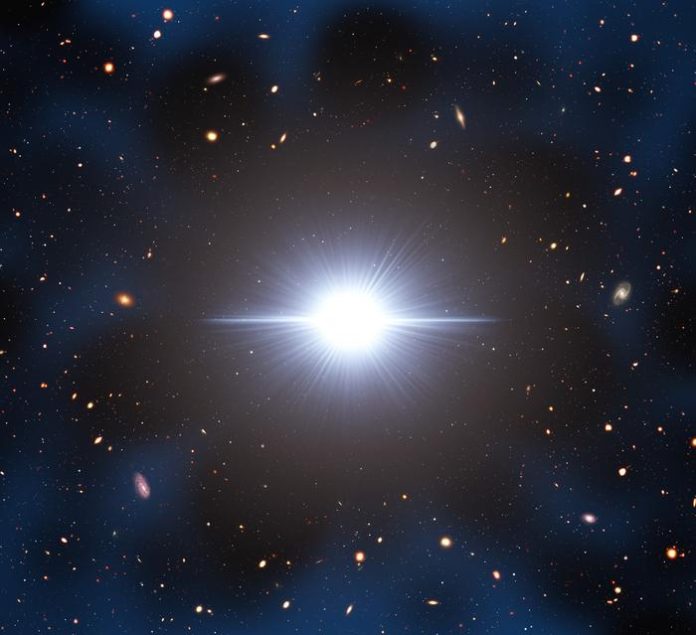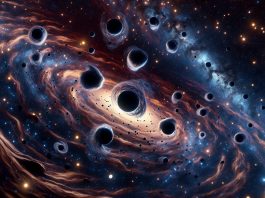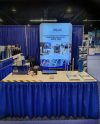Quasars are the most luminous objects in the Universe and are powered by material accreting onto supermassive black holes at the centres of galaxies.
Studies have shown that early-universe quasars have black holes so massive that they must have been swallowing gas at very high rates.
Most astronomers believe they formed in some of the densest environments in the universe where gas was most available.
However, observational measurements seeking to confirm this conclusion have so far yielded conflicting results.
Now, a new study using the Dark Energy Camera (DECam) points the way to an explanation for these disparate observations and a logical framework for connecting observation with theory.
Largest sky search of early-universe quasars
Utilising DECam’s massive field of view, the team conducted the largest on-sky area search ever around an early-universe quasar, trying to measure the density of its environment by counting the number of surrounding companion galaxies.
For their investigation, the team needed a quasar with a well-defined distance. Luckily, quasar VIK 2348–3054 has a known distance, determined by previous observations with the Atacama Large Millimeter/submillimeter Array (ALMA).
DECam’s three-square-degree field of view provided an expansive look at its cosmic neighbourhood.
Serendipitously, DECam is also equipped with a narrowband filter perfectly matched for detecting its companion galaxies.
“This quasar study really was the perfect storm,” said Trystan Lambert, who led the study. “We had a quasar with a well-known distance, and DECam on the Blanco telescope offered the massive field of view and exact filter that we needed.”
Using distance measurements to map neighbourhoods
DECam’s specialised filter allowed the team to count the number of companion galaxies around the early-universe quasar by detecting a very specific type of light they emit, known as Lyman-alpha radiation.
Lyman-alpha emitters are typically younger, smaller galaxies, and their Lyman-alpha emission can be used as a way to reliably measure their distances.
Distance measurements for multiple Lyman-alpha emitters can then be used to construct a 3D map of a quasar’s neighbourhood.
After systematically mapping the region of space around quasar VIK J2348-3054, Lambert and his team found 38 companion galaxies in the wider environment around the quasar — out to a distance of 60 million light-years — which is consistent with what is expected for quasars residing in dense regions.
However, they were surprised to find that within 15 million light-years of the quasar, there were no companions at all.
DECam’s role in offering new insights
This finding illuminates the reality of past studies aimed at classifying early-universe quasars and proposes a possible explanation for their conflicting results.
No other survey of this kind has used a search area as large as the one provided by DECam, so for smaller-area searches, a quasar’s environment can appear deceptively empty.
“DECam’s extremely wide view is necessary for studying quasar neighbourhoods thoroughly. You really have to open up to a larger area,” Lambert explained.
“This suggests a reasonable explanation as to why previous observations conflict with one another.”
Lambert’s team is currently following up with additional observations to obtain spectra and confirm star formation suppression.
They also plan to observe other quasars to build a more robust sample size.









